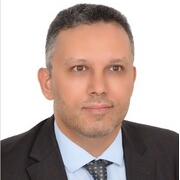Fractional Dynamical Systems: Applications and Theoretical Results
A special issue of Fractal and Fractional (ISSN 2504-3110). This special issue belongs to the section "Engineering".
Deadline for manuscript submissions: closed (20 March 2022) | Viewed by 33986
Special Issue Editors
2. Group of Mathematics, Faculty of Engineering, OSTIM Technical University, Ankara 06374, Turkey
Interests: mathematical models describing biological; medical and ecological phenomena; qualitative properties (oscillation, stability, periodicity, controllability, existence and uniqueness and chaos); differential equations; difference equations; delay differential equations; delay difference equations; impulsive differential equations; impulsive difference equations; dynamic equations on time scales; partial differential equations; partial difference equations; differential and difference equations of fractional order
2. Department of Mathematics, Azarbaijan Shahid Madani University, Tabriz 94171-71946, Iran
Interests: approximation theory; fixed point theory; fractional differential equations and inclusions; fractional finite difference; modeling theory
Special Issue Information
Dear Colleagues,
The fractional dynamic is a field of study in mathematics and physics that investigates the behavior of objects and systems by using differentiations of fractional orders. Due to its widespread applications in science and technology, research within the fractional dynamical systems has led to new developments that have attracted the attention of a considerable audience of professionals such as mathematicians, physicists, applied researchers and practitioners. Unlike integer-order models, fractional-order models have the potential to capture nonlocal relations in time and space with power law memory kernels. This means that they provide more realistic and adequate descriptions for many real-world phenomena. In spite of the tremendous amount of published results focused on fractional differential equations and dynamical systems, we believe that many challenging open problems remain. Indeed, the theory and application of these systems are still very active areas of research.
The main objective of this Special Issue is to fill a void in the literature by making relevant information available for an important area of research. The Special Issue on “Fractional Dynamical Systems: Applications and Theoretical Results” provides an international forum for researchers to contribute with original research focusing on the latest achievements in the theory and application of fractional dynamical systems.
Prof. Dr. Jehad Alzabut
Prof. Dr. Shahram Rezapour
Prof. Dr. George M. Selvam
Guest Editors
Manuscript Submission Information
Manuscripts should be submitted online at www.mdpi.com by registering and logging in to this website. Once you are registered, click here to go to the submission form. Manuscripts can be submitted until the deadline. All submissions that pass pre-check are peer-reviewed. Accepted papers will be published continuously in the journal (as soon as accepted) and will be listed together on the special issue website. Research articles, review articles as well as short communications are invited. For planned papers, a title and short abstract (about 100 words) can be sent to the Editorial Office for announcement on this website.
Submitted manuscripts should not have been published previously, nor be under consideration for publication elsewhere (except conference proceedings papers). All manuscripts are thoroughly refereed through a single-blind peer-review process. A guide for authors and other relevant information for submission of manuscripts is available on the Instructions for Authors page. Fractal and Fractional is an international peer-reviewed open access monthly journal published by MDPI.
Please visit the Instructions for Authors page before submitting a manuscript. The Article Processing Charge (APC) for publication in this open access journal is 2700 CHF (Swiss Francs). Submitted papers should be well formatted and use good English. Authors may use MDPI's English editing service prior to publication or during author revisions.
Keywords
- Fractional differential/difference equations
- Fractional stability and control
- Fractional Oscillation and boundedness
- Fractional chaos and bifurcation
- Fractional iterative methods and numerical computations
- Fractional modelling and simulation
- Fractional inequalities
- Fractional stochastic analysis
Benefits of Publishing in a Special Issue
- Ease of navigation: Grouping papers by topic helps scholars navigate broad scope journals more efficiently.
- Greater discoverability: Special Issues support the reach and impact of scientific research. Articles in Special Issues are more discoverable and cited more frequently.
- Expansion of research network: Special Issues facilitate connections among authors, fostering scientific collaborations.
- External promotion: Articles in Special Issues are often promoted through the journal's social media, increasing their visibility.
- e-Book format: Special Issues with more than 10 articles can be published as dedicated e-books, ensuring wide and rapid dissemination.
Further information on MDPI's Special Issue policies can be found here.






